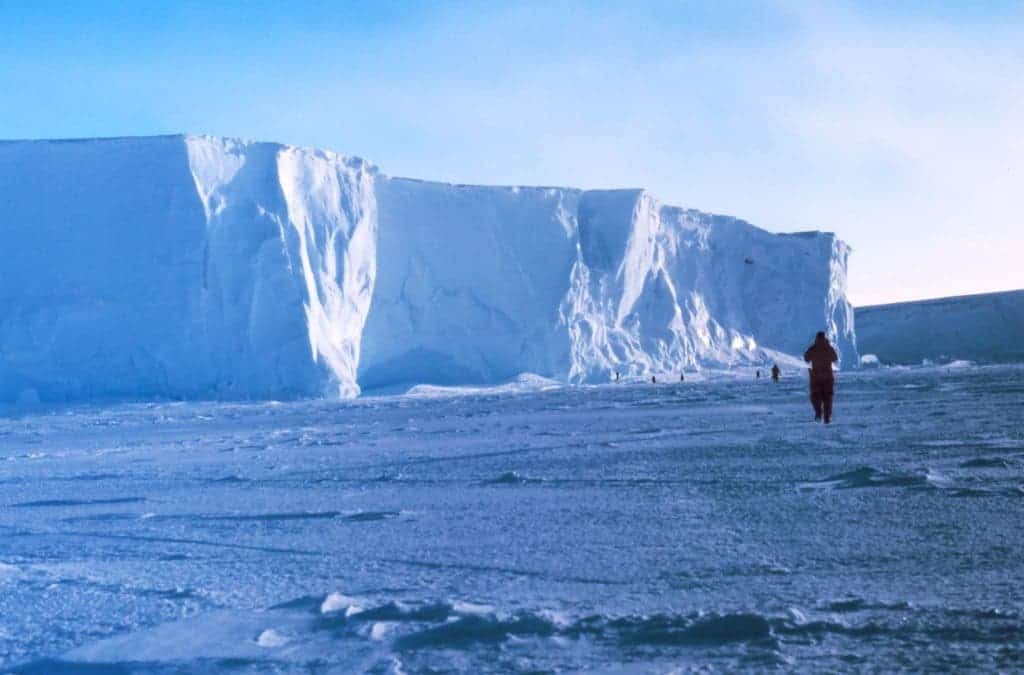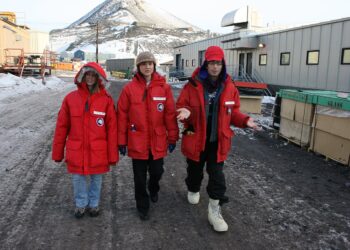
The barren and desolate Antarctic is an intimidating sight to behold. But as if that wasn’t enough, scientists found that when the wind blows across its surface, the ice shelf hums eerie soundscapes that would fit right in a B-movie horror flick. Strikingly, these creepy tunes actually have scientific value, enabling scientists to monitor warming in Antarctica’s variable ice.
The hum of Antarctica
Julien Chaput, a geophysicist and mathematician at Colorado State University in Fort Collins, deployed sensitive seismic sensors across the Ross Ice Shelf — Antarctica’s largest ice shelf, a huge Texas-sized plate of glacial ice — to study its physical properties. The sensors monitored the ice shelf’s vibrations and movements over a two-year period, from late 2014 to early 2017. But when the researchers actually analyzed the data, they came to a striking conclusion: the outermost layer of the ice shelf was almost constantly vibrating.
Ice shelves are covered in a thin blanket of snow, typically several meters deep, that insulates the ice below from warming and melting like a fur coat.
The seismic data show that as the wind whips across the snow dunes, this ‘fur coat’ rumbles like a colossal drum. The high frequency trapped seismic waves that ripple through the ice shelf were recorded by the researchers. This hum has a much too low frequency for human ears to hear, but you can listen to the sped-up version of the eerie sounds below.
“It’s kind of like you’re blowing a flute, constantly, on the ice shelf,” said Chaput in a statement.
And just like musicians change a flute’s pitch by altering which holes air is allowed to flow through or how fast it flows, weather conditions can change the frequency of the snow blanket’s vibrations.
“Either you change the velocity of the snow by heating or cooling it, or you change where you blow on the flute, by adding or destroying dunes,” Chaput said. “And that’s essentially the two forcing effects we can observe.”
The new study is important because it suggests seismic stations can be used to monitor the conditions of ice shelves in real-time. That’s because vibrations in the ice shelf’s insulating blanket could give scientists a sense of how the whole ice shelf is responding to climate conditions. For instance, changes in the hum could indicate the presence of melt ponds or cracks in the ice.
Such monitoring is already useful. After a warm spell in early 2016 when temperatures rose past freezing, the pitch of the low hum dropped, indicating snow and ice melt. But when temperatures dropped to their normal freezing levels, the corresponding drop in pitch did not reverse, indicating that permanent changes may have occurred in the blanket.
“The response of the ice shelf tells us that we can track extremely sensitive details about it,” Chaput said. “Basically, what we have on our hands is a tool to monitor the environment, really. And its impact on the ice shelf.”
The findings were reported in the journal Geophysical Research Letters.






